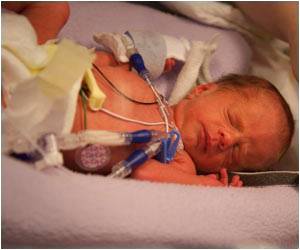Body maps develop early in life and may be integral for fostering infants' sense of their own bodies, as well as the ability to connect and learn from others.

"Body maps in the brain are an important part of how we build up an implicit sense of ourselves through the sense of having a body and seeing and feeling our bodies move," said lead author Peter Marshall, professor of psychology at Temple University in Pennsylvania, US.
"We also believe that these maps facilitate the connections that we build with other people, even in the early months of life," Marshall noted.
In one experiment, seven-month-old babies wore caps fitted with sensors that record brain activity by picking up tiny electrical signals from the surface of the head, a method known as electroencephalography, or EEG.
The study found that touches to infants' hands and feet resulted in different patterns of activity in the part of the brain that processes touch.
The results showed that, much as in adults, the body maps of infants are organized in a particular way.
Advertisement
Taken together, the researchers say, the findings demonstrate that body maps develop early in life and may be integral for fostering infants' sense of their own bodies, as well as the ability to connect with and learn from other people.
Advertisement
The findings appeared in the journal Trends in Cognitive Sciences.
Source-IANS










